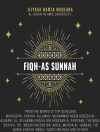How do American Jews identify as both Jewish and American? American Post-Judaism argues that Zionism and the Holocaust, two anchors of contemporary American Jewish identity, will no longer be centers of identity formation for future generations of American Jews. Shaul Magid articulates a new, post-ethnic American Jewishness. He discusses pragmatism and spirituality, monotheism and post-monotheism, Jesus, Jewish law, sainthood and self-realization, and the meaning of the Holocaust for those who have never known survivors. Magid presents Jewish Renewal as a movement that takes this radical cultural transition seriously in its strivings for a new era in Jewish thought and practice.
Innehållsförteckning
Foreword
Acknowledgments
Introduction
1. Be the Jew You Make: Jews, Jewishness, and Judaism in
Postethnic America
2. Ethnicity, America, and the Future of the Jews: Felix Adler,
Mordecai Kaplan, and Zalman Schachter-Shalomi
3. Pragmatism and Piety: The American
Spiritual and Philosophical Roots of Jewish Renewal
4. Postmonotheism, Renewal, and a New American
Judaism
5. Hasidism, Mithnagdism, and Contemporary American
Judaism: Talmudism, (Neo) Kabbala, and (Post) Halakha
6. From the Historical Jesus to a New Jewish Christology:
Rethinking Jesus in Contemporary American Judaism
7. Sainthood, Selfhood, and the Ba’al Teshuva: Art Scroll’s American
Hero and Jewish Renewal’s Functional Saint
8. Rethinking the Holocaust after Post-Holocaust
Theology: Uniqueness, Exceptionalism, and the Renewal of American
Judaism
Epilogue. Shlomo Carlebach: An Itinerant Preacher for a
Post-Judaism Age
Conclusion
Notes
Bibliography
Index
Om författaren
Shaul Magid is Jay and Jeannie Schottenstein Professor of Jewish Studies at Indiana University Bloomington. He is author of From Metaphysics to Midrash (IUP, 2008).












